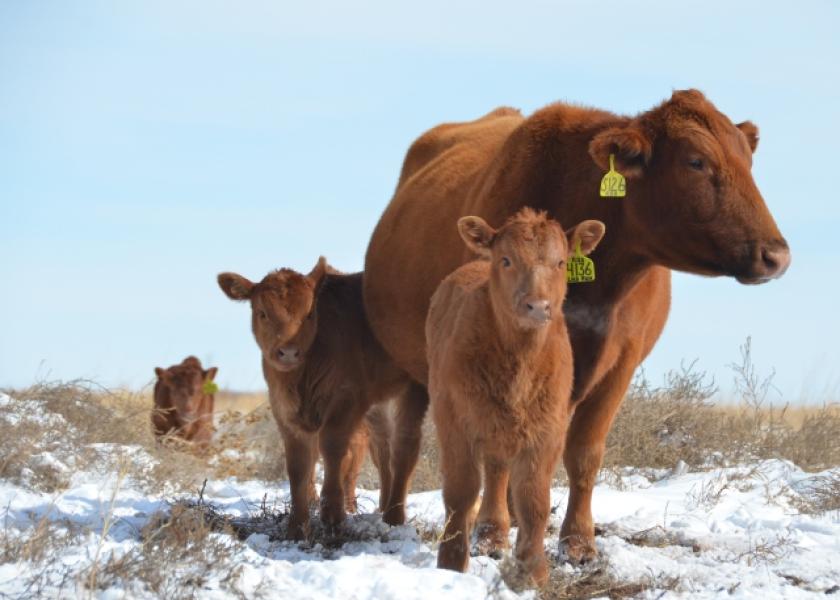Keep Records of Twins or Other Multiple Calf Births

By: Glenn Selk, Oklahoma State University Emeritus Extension Animal Scientist
As producers work through this (or any) calving season it is very important to record any multiple births that may have occurred. Estimates of the percentage of beef cattle births that produce twins vary. One estimate (Gilmore) puts the percentage at about 0.5% or 1 in every 200 births. Approximately one-half of the sets of twins should contain both a bull and a heifer calf. Make sure to write down these calf numbers of twin births while they are still nursing the cow. Be certain to not retain the heifer born twin to a bull as a replacement female.
Freemartinism is recognized as one of the most severe forms of sexual abnormality among cattle. This condition causes infertility in most of the female cattle born twin to a male. When a heifer twin shares the uterus with a bull fetus, they also share the placental membranes connecting the fetuses with the dam.
A joining of the placental membranes occurs at about the fortieth day of pregnancy, and thereafter, the fluids of the two fetuses are mixed. This causes exchange of blood and antigens carrying characteristics that are unique to each heifers and bulls. When these antigens mix, they affect each other in a way that causes each to develop with some characteristics of the other sex.
Although the male twin in this case is rarely affected by reduced fertility, in over ninety percent of the cases, the female twin is completely infertile. Because of a transfer of hormones or a transfer of cells, the heifer's reproductive tract is severely underdeveloped and sometimes even contains some elements of a bull's reproductive tract. A freemartin is genetically female, but has many characteristics of a male. The ovaries of the freemartin do not develop correctly, and they remain very small. Also, the ovaries of a freemartin do not produce the hormones necessary to induce the behavioral signs of heat. The external vulvar region can range from a very normal looking female to a female that appears to be male. Usually, the vulva is normal except that in some animals…large tufts of vulvar hair exist. The cattleman can predict the reproductive value of this heifer calf at birth and save the feed and development costs if he is aware of the high probability of freemartinism. (Source: “The Causes and Effects of Freemartinism in Cattle” by Laurie Ann Lyon.)
To dissuade any worries about embryo transfer calves, it is important to remember that the mixing of the fluids between fetuses does not occur until about day 40 of the pregnancy. Fertilized embryos of superovulated donor cows will be removed and transferred in the first seven to eight days after insemination and no chance of freemartinism will occur in the normal embryo transfer process.
In some cases, there are few, if any, symptoms of freemartinism because the male twin may have been aborted at an earlier stage of gestation. Hidden “freemartins” are often difficult to identify if replacement heifers are purchased. Therefore this is another good reason to cull any open (non-pregnant) replacement heifer soon after her first breeding season.
Another hidden cost of multiple births will be manifest in the mother of the calves. Cows that are nursing twin calves will require an estimated 13% more energy intake to maintain body condition. The additional suckling pressure on the cow will extend the post-calving anestrus period. Therefore, cows nursing twins will take longer to re-cycle to rebreed for next year’s calf crop. In some cases, producers may want to consider early weaning of the twin calves to allow the cow to re-cycle in time to stay with the other cows in the herd.







